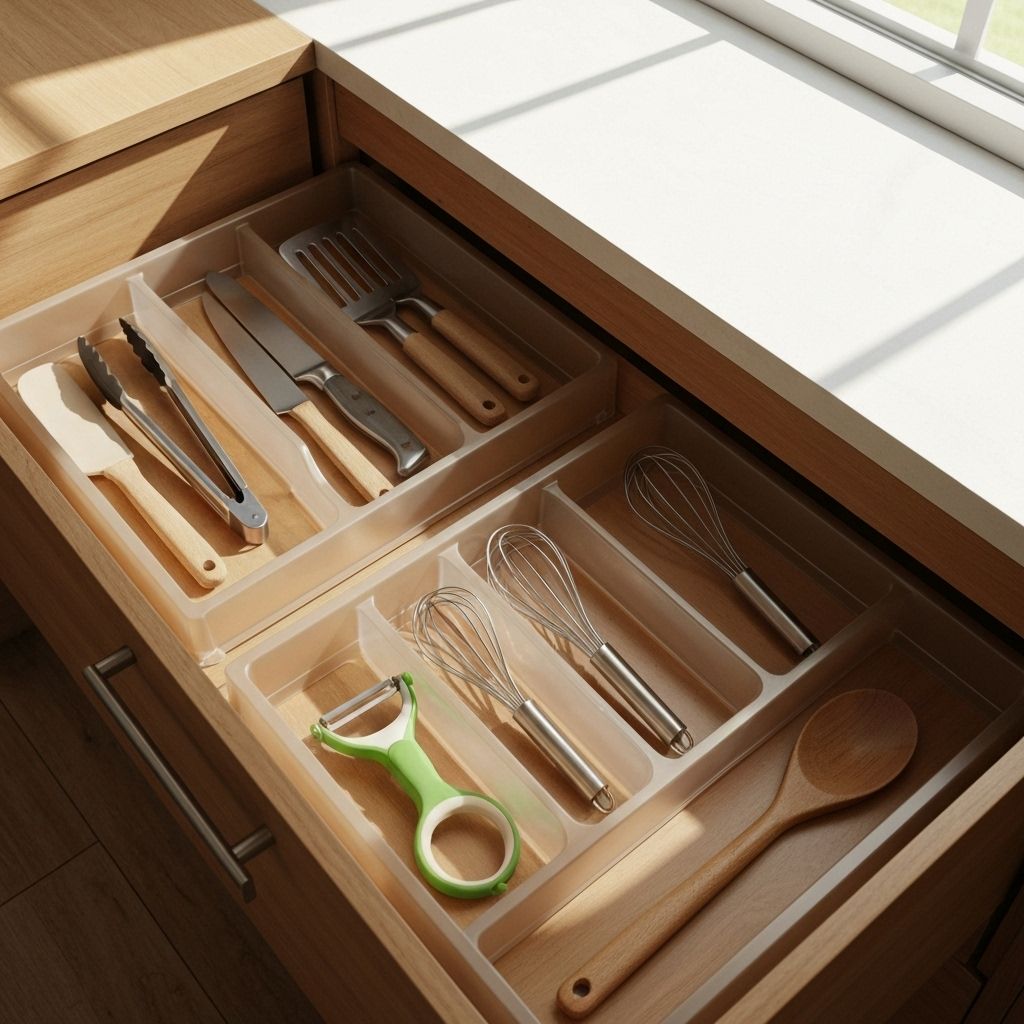Kitchen Drawer Organizers That Actually Work

Kitchen drawers have a way of descending into chaos. Utensils migrate, gadgets tangle, and finding the right tool becomes an archaeological dig. The right organizers can transform these spaces into models of efficiency.
Why Most Organizers Fail
Many drawer organizers look great in photos but fail in real-world use. They're too rigid for varied drawer sizes, too shallow for actual utensils, or made from flimsy materials that warp or crack. Successful organizers share three traits: adjustability, durability, and appropriate sizing.
Adjustable Dividers: The Foundation
Expandable drawer dividers are the workhorse of kitchen organization. Look for bamboo or sturdy plastic versions with spring-loaded ends that grip drawer sides securely. These create custom compartments that adapt as your needs change. Use them to separate utensil types, keeping spatulas away from whisks and measuring spoons in their own section.
Deep Drawer Solutions
Standard organizers often fail in deep drawers where items stack and become buried. Tiered organizers or stacking trays maximize vertical space, keeping frequently used items on top while storing backups below. For pot and pan drawers, vertical dividers let you file items on edge rather than stacking them.
The Junk Drawer Dilemma
Every kitchen has one—the catch-all drawer for batteries, twist ties, and mystery keys. Small compartment organizers with 6-12 sections contain this chaos. The key is making compartments small enough that items can't migrate but large enough to be useful.
Spice Organization
Spices in a drawer need special consideration. Tiered inserts let you see labels at a glance, while angled organizers prevent bottles from rolling. Consider drawer depth—standard spice bottles need at least 4 inches of clearance.
Knife Storage
Knife blocks waste counter space, but loose knives in drawers are dangerous. In-drawer knife blocks or magnetic strips keep blades secure and edges protected. Ensure the organizer fits your drawer depth and accommodates your largest knives.
Material Matters
Bamboo organizers are attractive and eco-friendly but can warp if they get wet frequently. Plastic is more water-resistant and easier to clean. Silicone works well for utensil holders as it's heat-resistant and dishwasher-safe. Metal organizers are durable but can scratch drawer interiors.
Installation and Adjustment
Most organizers require no installation—they simply sit in drawers. For adjustable dividers, measure your drawer width first and extend the divider slightly beyond that measurement for a secure fit. Don't over-tighten spring-loaded dividers as this can damage drawer sides.
Maintenance Tips
Empty and clean organizers quarterly. Crumbs and spills accumulate in corners. Check that dividers haven't shifted and readjust as needed. As your kitchen tools change, reconfigure compartments rather than forcing new items into old spaces.
The right drawer organizers turn frustrating searches into quick grabs. Invest in quality pieces that fit your specific drawers and usage patterns, and your kitchen will function more smoothly every single day.